#beef with okra
Explore tagged Tumblr posts
Text
Calulu de Carne Seca — xavskitchen
12 notes
·
View notes
Text
July 2024: Mostly Daily Harvests
Monday harvest:

Tuesday harvest:

Wednesday harvest:


Thursday harvest:

Our first cantaloupe of 2024. It is delicious:

We ordered some seafood from Cameron's Seafood in Maryland. UPS manhandled the box in shipping so the styrofoam container had a crack in one corner but everything arrived safely in spite of that. We've only cooked some of the shrimp so far but they were delicious:

Thursday dinner - beef, lemon squash & kohlrabi stir fry over basmati rice with cucumber salad. With the exception of the beef, rice & kohlrabi, everything on the plate was grown in our backyard. We had never had kohlrabi before but wanted to try it to see if it might be a cool season vegetable we want to try growing for the Fall. If you've never had kohlrabi, the flavor & texture is similar to cabbage but it has an unexpected sweetness & a little of that nuttiness that brussels sprouts have without the bitterness. So, yeah, we're going to try growing some this year. Gardening, cooking & life are about trying new things & embracing the things that bring you & the ones you love joy:

Friday harvest:

#garden#backyard garden#gardening#homegrown vegetables#vegetables#homegrown#harvest#onion#tomatoes#juliet tomato#squash#lemon squash#cucumbers#okra#clemson spineless#yellow squash#straightneck squash#flowers#red flowers#crocosmia#cantaloupe#maryland#cameron's seafood#beef#kohlrabi#basmati rice#rice#cucumber salad#dinner#stir fry
2 notes
·
View notes
Text
Decided to go to a buffet next week after I get paid. Yeah, it's probably going to be not so great food, but sometimes you need to eat dinner at a buffet for your mental health.
#i never really learned good coping mechanisms tbh#but i want some fried okra and rolls and mashed potatoes and roast beef
5 notes
·
View notes
Text















National Hot and Spicy Food Day
This day is dedicated to hot and spicy foods. Some hot foods include wasabi and horseradish, and some spicy foods are made with peppers that have a high capsaicin content. There is some information that suggests capsaicin is good for your health, and you can read about that here and here. Peppers with a higher capsaicin content are higher on the Scoville scale. Take a look at where different peppers and hot sauces are located on the scale.
How to Observe National Hot and Spicy Food Day
Hot and spicy foods should be consumed on this day. Common foods that are many times made spicy include chili, gumbo, chicken wings, and burritos. You can find some hot and spicy recipes here and here. Since this is a National holiday and an International Hot and Spicy food day takes place in January, you could try to eat spicy foods that originated from the country you are a citizen of or were born in. To celebrate the day you could also buy some hot peppers and have a contest with your friends to see who is best able to stomach them.
Source
#El Diablo Burger#Flaming Chicken Burger#Chicken Hunan Kung Pao#Chicken Lickin' Good#Kimchi Mandu Jeongol Hot Pot#Hot Srirache Wings#Penang Style Spicy Sizzling Beef#Spicy Okra Tofu Pork#Okra Kimchi Fried Rice#Kimchi Burger#Kimchi Fries#green salsa#Jalapeno Popper Pizza#Spicy Tantan Ramen#USA#Canada#National Hot and Spicy Food Day#19 August#NationalHotAndSpicyFoodDay#travel#vacation#BBQ Korean Bowl
0 notes
Text
Slow Cooker Veggie-Beef Soup with Okra

So simple! Most likely, you already have these ingredients in your kitchen!
0 notes
Photo

Recipe for Granny's Okra Soup Make sure to use lots of tomatoes, okra, lima beans, and potatoes when preparing this simple okra soup. It can be made with fresh, frozen, or canned vegetables.
0 notes
Photo

Recipe for Slow Cooker Veggie-Beef Soup with Okra So simple! Most likely, you already have these ingredients in your kitchen! 1 pound ground beef, 1 can Italian diced tomatoes drained, 1 package frozen mixed vegetables, 2 potatoes peeled and chopped, salt and pepper to taste, 1 can diced tomatoes drained, 1/4 cup onion chopped, 1 tablespoon ketchup, 1 cup sliced fresh or frozen okra
0 notes
Text
The importance of vitamin D in Haircare
༺♡༻༺♡༻༺♡༻༺♡༻ ༺♡༻༺♡༻༺♡༻༺♡༻༺♡༻༺♡༻༺♡༻ ༺♡༻
Our hair is thinning, loosing it's volume and not growing as it used to before. You have taken hair-supplements already and it doesn't seem to improve?
Topical treatments are great, but oftentimes hair health is impacted from the inside.
Therefore:
Vitamin D(3) is slept on as a nutritional supplement to prevent hair loss and get healthier hair.
Research on Vitamin D(3) :
Vitamin D(3) is involved in various signalling pathways within hair follicles, particularly in the growth phase of the hair cycle
Vitamin D deficiency is associated with several types of hair loss
People with hair loss are more likely to have low vitamin D levels in their blood
Impacts of a Vitamin D deficiency
Decreased hair volume
Impede the hair follicles growth phase
Contribute to hair thinning
How to improve vitamin D levels
First, you should go to the doctor and get your blood checked for Vitamin D deficiency.
Because then you'll get the proper dosage for you.
If your deficiency is not as bad you can buy those supplement from the drugstore.
You have to eat something fatty before you take the supplement for the best results.
Important: Don't go for the highest Vitamin D supplement, due to Vitamin D toxicity. Start with a lower dosage if you're not deficient
Another way to incorporate more Vitamin D is through your diet.
Foods that contain Vitamin D
Non Plant based:
Fatty fish -> ex. Salmon; Mackerel; Sardines
Egg yolks
Beef liver
Milk
Yogurt
Plant based:
Fortified plant-based foods: ex. vegan milk; margarine & tofu
Mushrooms: -> esp. those exposed to UV light
Fruits and vegetables: -> Smaller amount ex:
-> Kale, spinach, and collard greens
->Okra, sweet potatoes, broccoli
->Oranges, bananas, kiwis, papayas
Manifesting Healthy hair for all girlies ya
#Manifesting healthy hair#I forgot going 15 min into the sunlight every day#But this tip is so underrated#It's a game changer fr#Like you can have the best facial features but if the hair is not right#It does not look as good#girlblogging#wonyoungism#girl blogger#becoming her#becoming that girl#pink academia#dream girl#it girl#self improvement#pink pilates princess#vitamin d#health is wealth#Hair is like sooo important for your glow up#ya#beautiful hair#glow up era#glow up#hair care#hair loss#beauty#hairstyle#beautiful
41 notes
·
View notes
Text
Looking for a Shabbat dinner centerpiece or a hearty midweek meal? Picture cubes of eggplant, zucchini, bell peppers, tomatoes and potatoes cooked together to create that special harmony only veggies that grew together in the sun achieve. You’re thinking of ratatouille, right? But what I have in mind is a heartier dish from Romania and Bulgaria called ghiveci or guvech.
Romanian ghiveci and Bulgarian guvech are indeed very similar to the famous ratatouille, but being peasant’s food, they’re more rustic and substantial. The veggies for guvech are cut into large, uneven chunks, and can be cooked all together at once, while for ratatouille, each component is fried separately before they are combined. This makes guvech preparation much easier, and allows for creative improvisations; you can easily add any vegetables in season. Besides the mandatory eggplant, zucchini, peppers, tomatoes and potatoes, green beans or okra are common. Guvech is seasoned very simply with salt, black pepper and occasionally paprika, to let the produce shine. The Bulgarian version is cooked with fatty meat, while most Romanian versions are vegan.
“In Bulgaria, guvech used to be cooked in a clay pot called gyuveche,” Etti Ben Yosef, a Bulgarian Jew who lives in Israel, told me. “The stew was cooked in the oven for many hours at low temperature.”
But these days, when Ben Yosef makes guvech for Shabbat dinner, she uses a pressure cooker to precook the beef short ribs before adding them to the vegetables. Then, she cooks the entire stew on the stove for a long time, putting it in the oven for the final hour to give it a nice crust. She feels lucky to share the recipe with her adult children. “I keep the tradition so the kids will remember,” she said.
Guvech’s origins can be traced to the Ottoman Empire that ruled the Balkan region for hundreds of years. The original Turkish dish, called güveç, is cooked in a wide, clay dish by the same name. It’s very similar to the Bulgarian guvech and includes chicken, lamb or beef. There are many other variations of the dish throughout the Balkans. Bosnian Đuveč or djuvec is the name of a clay pot as well as a veggie casserole that’s cooked with rice; Greek giouvetsi is also cooked with rice. In Romania, the eggplant-tomato version is considered summer ghiveci, while winter ghiveci is prepared with carrots, cabbage, cauliflower and mushrooms.
Bulgarian Sephardi Jews and Romanian Ashkenazi Jews brought guvech to Israel (where it’s pronounced “ghe-vech”) and made the dish widely popular. No wonder, given that eggplant and tomatoes are so beloved in Israel and are of such high quality. Early Israeli versions can be found in Molly Bar David’s “Folkloric Cookbook” from 1964. The first version includes 14 different vegetables (including celery root and cauliflower) and meat. The second version is for Romanian ghiveci that’s baked with a whole fish on top.
The vegetarian Romanian version is probably most common in Israel nowadays. And although it is traditionally served over rice, I like to serve it on another Romanian staple, mamaliga. It’s the definition of comfort food.
This recipe is the Bulgarian version of guvech that includes meat. You can make the recipe vegetarian by simply omitting the meat. The rest of the ingredients and instructions stay the same.
Notes:
It is recommended, and easy, to add any seasonal vegetables to the basic guvech. Consider adding: 1 lb butternut squash or sweet potato, cut into ½-inch dice; ½ lb whole okra, stems removed; or ½ lb green beans, cut into 1-inch pieces.
You can cook the meat, if using, up to two days in advance. Store the cooked meat in the fridge with the cooking liquid. Before using, remove from the fridge and discard the fat on the top of the pot (the fat will be solid and white in color).
Guvech keeps in the fridge for up to four days.
149 notes
·
View notes
Text

Succotash is a culinary dish consisting primarily of sweet corn with lima beans or other shell beans. Other ingredients may be added including corned beef, potatoes, turnips, salt pork, tomatoes, multi-colored sweet peppers, and okra. Because of the relatively inexpensive and more readily available ingredients, the dish was popular during the Great Depression in the United States. It was sometimes cooked in a casserole form, often with a light pie crust on top as in a traditional pot pie. Succotash is a dish with a long history. The stew was introduced to the colonists in the 17th century by indigenous Americans. Composed of ingredients unknown in Europe at the time, it gradually became a standard meal in the cuisine of New England and is a traditional dish of many Thanksgiving celebrations in the region, as well as in Pennsylvania and other states. src.: https://www.dictionary.com/browse/succotash, Bowles, Ella Shannon (1947). Secrets of New England Cooking. Barrows, https://www.nytimes.com/2015/08/19/dining/yes-succotash-has-a-luxurious-side.html, https://newengland.com/yankee-magazine/food/succotash-recipe-with-a-history/, Morgan, Diane and John Rizzo. The Thanksgiving Table: Recipes and Ideas to Create Your Own Holiday Tradition. Pg. 122 photo ref.: https://foodmeanderings.com/corn-succotash-gluten-free/
17 notes
·
View notes
Text
can you out picky eater me:
tho ig for some i have like dietary reasons
as many foods as you can list that you dislike
beef
lamb
shrimp
crab
oysters
cold cuts of any kind
peas in pods
tree nuts and peanuts
olives
mushrooms
tomatoes
advocado
eggplant
squash
blue cheese
potato chips
pickles
most kinds of beans
apple juice
strawberry milk
salads (not the vegetables, but like i cant do it all mixed together)
mayo
mustrard
ranch
raw fish
cooked fish
bell peppers
peas in pods
asparagus
most mixed foods
Brussels sprouts
Cilantro
Anchovies
Black licorice
Beets
Liver
Okra
Bitter melon
Radishes
Seaweed
Horseradish
Wasabi
Coconut
Egg yolks
Fennel
Turnips
fermented items
12 notes
·
View notes
Text
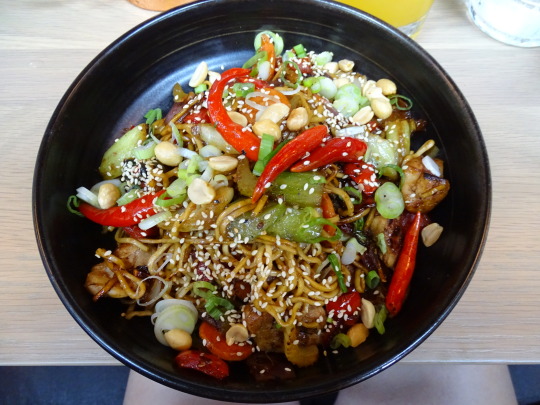

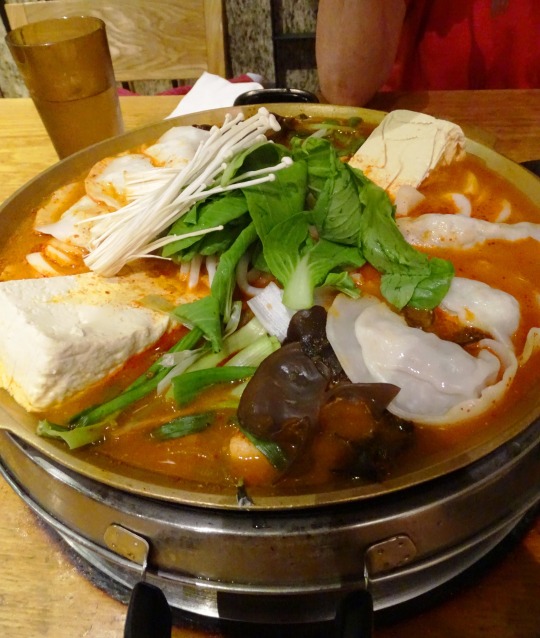

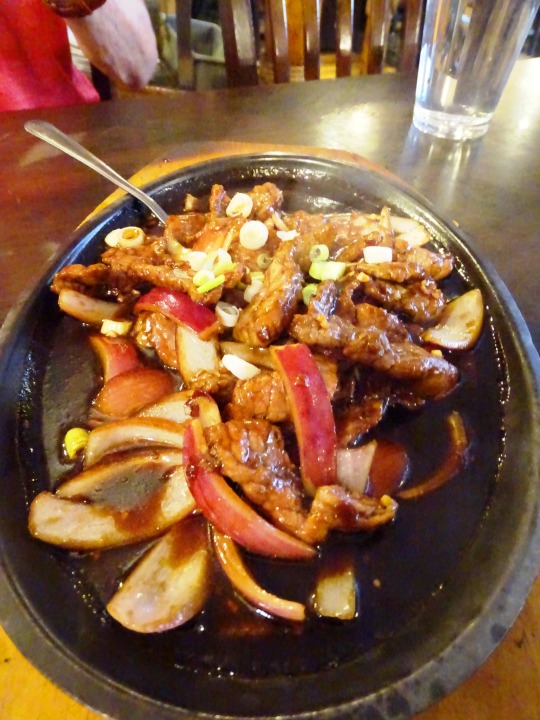

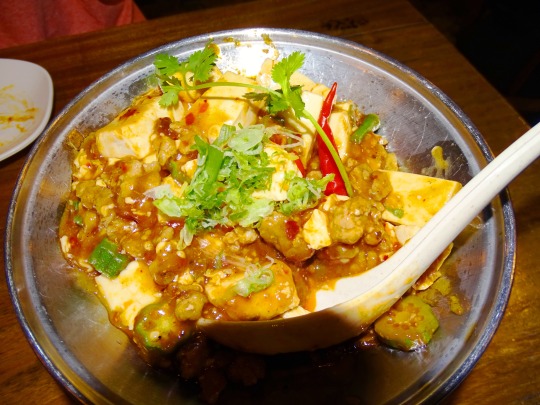
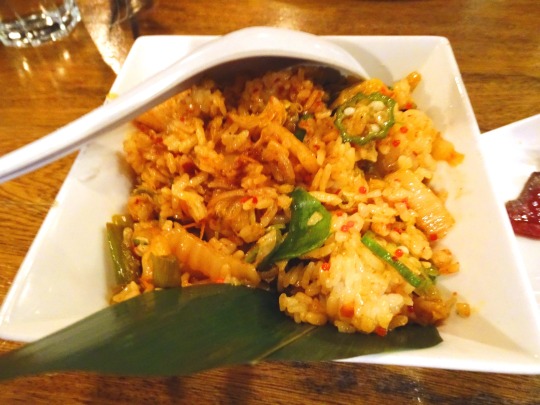

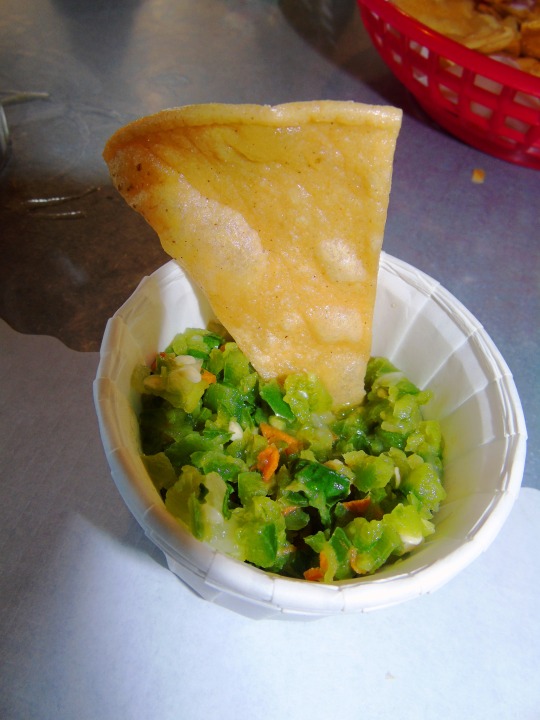


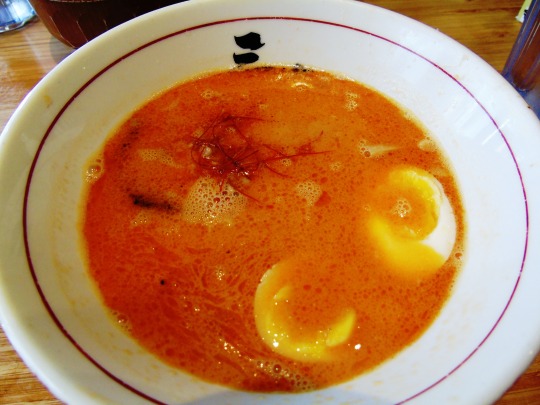
National Hot and Spicy Food Day
This day is dedicated to hot and spicy foods. Some hot foods include wasabi and horseradish, and some spicy foods are made with peppers that have a high capsaicin content. There is some information that suggests capsaicin is good for your health, and you can read about that here and here. Peppers with a higher capsaicin content are higher on the Scoville scale. Take a look at where different peppers and hot sauces are located on the scale.
How to Observe National Hot and Spicy Food Day
Hot and spicy foods should be consumed on this day. Common foods that are many times made spicy include chili, gumbo, chicken wings, and burritos. You can find some hot and spicy recipes here and here. Since this is a National holiday and an International Hot and Spicy food day takes place in January, you could try to eat spicy foods that originated from the country you are a citizen of or were born in. To celebrate the day you could also buy some hot peppers and have a contest with your friends to see who is best able to stomach them.
Source
#Flaming Chicken Burger#Chicken Hunan Kung Pao#Chicken Lickin' Good#Kimchi Mandu Jeongol Hot Pot#Hot Srirache Wings#Penang Style Spicy Sizzling Beef#Spicy Okra Tofu Pork#Okra Kimchi Fried Rice#Kimchi Burger#Kimchi Fries#green salsa#Jalapeno Popper Pizza#Spicy Tantan Ramen#USA#Canada#National Hot and Spicy Food Day#19 August#NationalHotAndSpicyFoodDay
0 notes
Text
sunday recap 🥓😽
so many things today but more importantly SO MANY CATS LET GET THIS THROUGH SO WE GET TO CATS
fit check, i changed like 5-6 times wanna lean into a coquette style but sadly this the shirt with the closest match I could find

seafood buffet because we didnt have any breakfast so this kinda our brunch. this just opened in the mall near where I lived lmaoo, basically they served seafood in any kind, and also there bbq and hotpot too but we didn't take the hotpot. all seafoods are very fresh (look at that tank!!!) again ranking
grilled shrimp and oyster with cheese: 8/10, the cheese is like too sweet and fatty
grilled snail with scallion: 8/10, good but nothing special
sashimi: 9.2/10, very solid!!! and u can get as many as u want
sushi: 7.8/10, idk I dont grab those much there not much variation also it can make u full quick
grilled abalone (not pictured): 9/10, for the price we can get as much as we want and I think its neat! also it got run out so quick lmaoo
seafood soup: 9/10, phenomenal, like I had two bowl of these
grilled everything (had pork chest, pork, beef, octopus, grouper fish, okra, eggplant and cheese fish ball): 9.5/10, I love the way they marinated the meat!!
durian ice cream: 7.5/10, nothing special also it all durian which I dont like and they run out of chocolate ice cream :((
flan with coffee sauce: 9.2/10, smooth, creamy with that bitter sauce like it just top notch flan, literally one of the best I've ever eat








also on the way down i saw they're having this cat contest thing like there so many booths it looked so fun (pictures later cuz I took like A LOT)

first tried a bunch of stuff at uniqlo, obsessed with these snoopy shirts and these cutest zip up, like the zip up are clothes for children but there big size and I can fit in there too



trying on, the shirts is from the male section and the zip up and hoddies are from children section biggest size they look so cute tho icant think of the way I would wear the white zip up a lot and the green shirt is xs so I def need a size bigger



next is cotton-on, they're having this collab with polly pocket which is sawr cute if only they're not like fucking expensive, like why is that shirt 30$ and that tiny MICRO purse 28$ like I dont get it, it not even real leather! also oversea website having XL size but vietnamese store doesn't is criminal

tried on a bunch of stuff the sale associate was looking at me like crazy also the price there has only gotten more ridiculous with time. the black shirt was giving sabrina carpenter and there another one with blue background and red font just like short n sweet aesthetic lmeow. the cardigan looked so close like that coloring the cutest but it looked wear on my body. the mentioned polly pocket shirt, I mean idk it fit but it expensive and also I dont like too much figure hugging in my clothes. same with the other shirt who I think the color pretty nice




can you guess which one i got hehe

8 notes
·
View notes
Text
i want to eat okra and pickled vegetables and mapo tofu and brisket and spicy noodles and raw tuna and mackerel and artichoke and beets and hot and sour soup and cabbage rolls and sourdough bread and meat pie and hamburger and beef wellington and butter chicken and fried mushrooms and onion soup and pasta carbonara and feta pastry and falafel and stew and fried rice and crepes and honey cake and apple cake and plum cake and strawbebby cake and cranbebby muffins and bluebebby muffins and rhubarb pie and i want to drink green tea and black tea and kvass and tarragon soda and coffee and herbal fruits teas and kombucha and beer and wine and soju and sake and hot chocolate and also every other food and drink forever
32 notes
·
View notes
Text
Sinigang
Sinigang is a sour soup native to the Philippines. This recipe uses pork as the main ingredient. Other proteins and seafood can also be used. Beef, shrimp, fish are commonly used to cook sinigang.
I grew-up eating pork sinigang at least once a week with a saucer of fish sauce and crushed siling labuyo on the side as my dipping sauce. During rainy days, I enjoy my sinigang meal with rice and a few pieces of fried tuyo. These are small fish that were salted and dried under the sun. It is a good combination as far as I am concerned.
How to Cook Sinigang
1. Extract The Flavors From The Tamarind
The old school method of cooking sinigang makes use for fresh young tamarind. This has to be boiled until enough sourness is extracted from it. In this recipe, I boiled the tamarind in 2 quarts of water for 40 minutes. It can be done for up to 1 hour for optimal results.
Once the flavors are extracted from the fruit, the solid parts of the tamarind need to be removed. Do this by running the water into a kitchen sieve or a strainer. I recommend squeezing the tamarind afterwards. You will be surprised on how much flavors are left in the pulp
2. Boil The Tamarind Broth And Cook The Meat
Traditional sinigang is cooked plainly by boiling all the ingredients together. Start by pouring the tamarind broth (in step 1) into a cookware of your choice. Deep and wide pots are perfect for this.
Boil the liquid and then add some onion and tomato. This will add flavor to the broth. This is also the proper time to add the pork belly. Make sure to cover your pot so that the liquid can boil quickly.
Skim-off the floating scums, add a bit of fish sauce for flavor, and then cover and simmer until the pork becomes tender. This can take between 45 to 90 minutes depending on the quality of the meat.
3. Add The Vegetables Sequentially
Not all vegetables cook at the same time. This is the reason why I am adding the sinigang veggies by batch.
The first batch of veggies to add are daikon radish and eggplants. Some people also add their string beans at this point if they want it to be extra soft later on. I prefer mine to be a bit crisp.
After 5 minutes of cooking in low heat (above simmering temp), add the long green peppers, string beans, remaining tomatoes, and okra and continue cooking for 3 minutes.
4. Season It And Then Add The Remaining Ingredients
There is one vegetable that needs to be added yet. I am referring to the water spinach. I personally add the stalk and leaves on the later part of the process to retain its freshness. It is important to serve the soup right away (while piping hot) for best results.
For this step, I added the stalks of the water spinach and seasoned the dish with fish sauce (patis) and ground black pepper (this ingredient is optional). Quickly cook it for around 2 minutes before adding the water spinach leaves. Cover and turn the heat off. You will basically be cooking the leaves using the residual heat inside the pot. Do this for 3 to 5 minutes. It should be enough for you to prepare the rice and side dishes on the dining table before announcing to everyone that dinner (or lunch) is served.
What fruits are used in sinigang to make taste sour?
The quality of this dish depends on the souring agent. These fruit ingredients can make the soup sour:
Tamarind
The most common and widely used is unripe tamarind. It is known as sampaloc in the Philippines and this ingredient is where the popular “instant sinigang mixes” are derived from.
Young tamarind has a higher concentration of tartaric acid, which gives it a tangy and sour taste. This sourness is especially pronounced in young tamarind pods or when using the pulp extracted from them.
Guava
Guavas can vary in flavor depending on their ripeness and variety, but they typically have a sweet and tangy taste. Some varieties of guava can be more sour than others, especially if they are not fully ripe. However, ripe guavas tend to have a pleasant balance of sweetness and tartness. Overall, while guavas can have a slightly sour undertone, they are generally known for their sweet and aromatic flavor.
Bilimbi (Kamias)
Bilimbi is a tropical fruit-bearing tree originating from Indonesia, though it is also present in other regions of Southeast Asia and certain Pacific islands. The fruit of the bilimbi tree resembles a small cucumber or green chili pepper, typically measuring between 4 to 10 centimeters in length. Its taste profile is characterized by a tart and sour flavor akin to that of a green plum or sour green apple.
In culinary practices, bilimbi finds frequent use in sour dishes, pickles, relishes, and preserves. It is also incorporated into various cuisines for curries, sauces, and salads. Given its acidic nature, bilimbi serves as a viable alternative to vinegar or tamarind in certain recipes. Furthermore, bilimbi holds significance in traditional medicine for its purported medicinal properties, believed to offer diverse health benefits.
Green Mango
Green mangoes are typically sour. The level of sourness can vary depending on the variety of mango and its stage of ripeness. Green or unripe mangoes have a firmer texture and a tart, tangy flavor due to their higher levels of acidity. As mangoes ripen and mature, they become sweeter and less sour, with a softer texture. Green mangoes are commonly used in various cuisines to add a sour or tangy flavor to dishes, such as salads, chutneys, pickles, and sauces.
Pineapple
Pineapple can contribute to making a soup taste sour, especially if it is used in large quantities or if the pineapple itself is particularly ripe and acidic. Pineapples contain natural acids, such as citric acid and malic acid, which can impart a tangy flavor to dishes.
The sourness of a pineapple is often balanced by its sweetness, creating a pleasant and refreshing taste. Some varieties of pineapples may be naturally sweeter or more acidic than others. Additionally, the way pineapples are grown, harvested, and stored can also affect their taste.
However, the degree of sourness imparted by pineapple will depend on various factors, including how it is prepared and cooked, as well as the other ingredients used in the soup. Overall, pineapple can contribute to making a soup taste sour, but its impact on the overall flavor will depend on the specific recipe and culinary preferences.
Cotton Fruit (Santol)
Cotton fruit, also known as santol, typically has a sour taste when unripe. However, as the fruit ripens, its flavor can vary. Ripe cotton fruit can be sweet with a hint of sourness, especially near the skin or closer to the seeds. The level of sourness can also depend on the specific variety of cotton fruit and individual preferences.
The best vegetable soup in the world!
What is sinigang?
Of the many soups and stews that proliferate Filipino cuisine, it can be sure that sinigang has no rival. Many meals, both in childhood and adulthood, have been spent sitting in front of the familiarly flavorful broth. Its inviting aroma belies a flavor unlike no other — tart, savory, and refreshing, one can’t help but fall in love with it! With many heralding it as the national Filipino food, it comes as no surprise that its reputation has spread far and wide across the world.
Pork Sinigang Recipe
Indeed, in 2021, travel guide TasteAtlas proclaimed our humble dish to be the best vegetable soup in the world! This should come as no surprise to us, either. After all, who can resist the warmth and comfort that a bowl of sinigang brings? Although a staple so common in every household, knowing that sinigang will be the main course of the day can’t help but elicit feelings of excitement and delight. No matter the weather nor the season, sinigang stands both the test of time and climate. This dish brings pleasure wherever it finds a home, and Filipinos continue to relish in its sour, but yummy taste.
Where does sinigang come from?
A mix of tender meat, fresh spinach, string beans, and tomatoes, as well as a dash (or more) of savory fish sauce, make for the perfect combination in simmering and incorporating each unique flavor with each other. Powerful and poignant, sinigang is a Filipino native, through and through. Its name, sinigang, originates from the Tagalog verb that directly translates to “to stew” — sigang! Because of its Tagalog name, many presume it to be Tagalog in origin as well. This yummy meal has relatives in other regions in the country as well, to be sure — yet none are quite like this classic soup that many have fallen in love with.
Pork Sinigang Recipe
Again, sinigang isn’t a dish so much as it is a cooking method. This is why, like we mentioned earlier, there are a wide number of variations of this delicious dish! These include your sinigang na hipon, a favorite seafood variant. Here, tender and fresh shrimp soak up all the vibrant flavors of your beloved stew. It’s important to keep your shrimp perfectly cooked, so it’s much easier to peel the skin off later on.
sinigang
And for something a little more out of the box? Try this sinigang mix inasal na manok! Now, these are two dishes you wouldn’t commonly associate with each other. But the thrilling flavors of a sinigang broth, coupled with the smoky taste of inasal, makes this a winning combination. This twist on another Filipino favorite breathes life into your everyday inasal recipe. Sample it for yourself!
Which sinigang variant is your favorite?
Sinigang Ingredients
Sinigang ingredients
Pork Belly – I am using 2 lbs. of pork belly for this recipe. This is the same cut of the pork that is used to make bacon. Aside from using pork, you may use beef, chicken, fish, and shrimp.
Young tamarind – This is unripe tamarind. It has a sour taste and is the traditional souring agent for this dish. Other
Water Spinach – Kangkong is the local name for water spinach. Make sure to wash this thoroughly before using.
String Beans – Sitaw, also known as snake beans is a regular component of this dish. Green beans (Baguio beans) can be used as an alternative.
Eggplant – Chinese or Japanese eggplant varieties are best for this dish. I am using 2 pieces for this recipe. Slice the eggplants diagonally or roll-cut it.
Daikon radish – Labanos is the local term for this vegetable. 1 medium sized daikon is enough for your sinigang na baboy. I consider this as an optional ingredient.
Long green pepper – Siling pansigang is a must have as far as I am concerned. You can substitute this with either Jalapeno or Serrano peppers.
Sinigang Alternative Ingredients
Sinigang na Baboy
This sinigang version makes use of pork belly. Any cuts of pork can be used to make it. Beef and fish can also be utilized.
I am using spinach in this recipe. It is actually an alternative ingredient to kangkong (water spinach), which is the most common type of leafy green vegetable used when cooking sinigang.
Sinigang mix is a powdered product that helps bring-in that good sour taste to sinigang. Old school methods requires boiling either fresh young tamarind or bilimbi for a long time until the flavors are extracted. It is your choice. It is a no-brainer, so I chose flavor and convenience.
Pork Sinigang
Tips & Tricks
Meat quality
The quality of the meat is an important factor to consider when cooking sinigang as it can affect your overall eating experience. Make sure to cook the meat until tender. You don’t want to challenge yourself by chewing the meat with all your might. Slow cooking or simmering the meat for 60 to 90 minutes (or longer as needed) makes it extra tender and also provides more flavor to the broth.
In addition, having moist meat is ideal. Fat plays an important role to this. Use either pork belly or pork shoulder to have this result.
Adding flavors to the broth
Onion and tomato brings-in flavor to the broth. Cook it during the initial steps. Some people like their tomato intact. If you are one of these people, I suggest to cook half of the tomato initially and add the remaining once the dish is almost done.
Working with available ingredients
You can still make sinigang even without all the vegetable in the list. All you need is pork, green leafy veggies, and the souring agent. Of course, water is essential for this recipe.
Sinigang for busy people
Busy people can use a slow cooker to cook sinigang. Make sure to add the spinach or kangkong only when you are about to eat. It is best to have these fresh.
Is sinigang really the national dish of the Philippines?
Though many make jokes and proclamations to the same effect, the truth of the matter is that sinigang is only the Philippine’s national dish unofficially. Regardless, some dishes may also rise to the challenge of national dish, and have separate camps of their own! Let’s take a look at some of them now.
pork sinigang panlasang pinoy
For starters, of course, you have sinigang’s topmost competition: adobo! Point blank, adobo is perhaps sinigang’s antithesis: where the latter is sour and tart and soupy, adobo is a salty, savory and saucy dish. The only thing they have in common is their use of juicy and tender pork belly as the main protein. Like sinigang, the term adobo refers to a general cooking method, and not necessarily one particular meal. To adobo something means to marinate it in a combination of soy sauce, vinegar, garlic, and peppercorn. These flavors intermingle so perfectly, you wouldn’t be able to tell one from the other. The result is, to be sure, a dish that is so umami you’d want to drizzle the sauce over your entire plate of rice!
What goes well with sinigang?
This is best served with a condiment composed of fish sauce and crushed fresh Thai chili pepper.
I grew up having salted fried herring (also known as tuyo) as a side dish for my sinigang. The saltiness of the fish complements the sour broth of the soup.
What is a substitute for kangkong?
Kangkong is one of the main ingredients for sinigang. It is recognized under names like water spinach, water morning glory, or Chinese spinach, is a verdant vegetable frequently incorporated into Southeast Asian cooking. With its delicate stems and leaves, it’s frequently prepared through stir-frying, steaming, or inclusion in soups and salads.
You can use the following as alternative ingredients: Spinach, Bok Choy, and Pak Choy.
Other popular Filipino dishes
An additional Filipino favorite would be the tasty lechon! Celebrations across the country just wouldn’t be a celebration without the presence of a gorgeously golden brown pig to complete it

Sinigang na Baboy
Try this Filipino Pork Sinigang Recipe. Let me know what you think. We can share ideas and let our opinions be heard by posting a comment.
pork sinigang panlasang pinoy
5 from 3 votes
Sinigang
Filipino sour soup with pork and vegetables
Prep: 10minutes minutes
Cook: 1hour hour
Ingredients
▢2 lbs. pork belly see notes
▢1 lb. young tamarind see notes
▢1 bunch water spinach chopped
▢8 pieces string beans cut into 2-inch pieces
▢2 pieces eggplants sliced
▢1 piece daikon radish see notes
▢8 pieces okras
▢2 pieces tomatoes sliced into wedges
▢2 pieces long green pepper
▢1 piece onion sliced into wedges
▢2 quarts water
▢Fish sauce and ground black pepper to taste
Instructions
Boil the young tamarind in 2 quarts of water for 40 minutes. Filter the tamarind broth using a kitchen sieve or a strainer. Squeeze the tamarind afterwards to extract its remaining juices.
1 lb. young tamarind, 2 quarts water
Pour the tamarind broth into a cooking pot. Let it boil and then add the onion, pork belly, and half the amount of the tomatoes.
2 lbs. pork belly, 1 piece onion, 2 pieces tomatoes
Skim-off the floating scums, pour 1 tablespoon fish sauce, cover and continue to simmer for 1 hour.
Fish sauce and ground black pepper
Add daikon radish and eggplants. Cook for 5 minutes.
1 piece daikon radish, 2 pieces eggplants
Add the long green pepper, string beans, remaining tomatoes, and okra. Cook for 3 minutes.
8 pieces string beans, 2 pieces tomatoes, 2 pieces long green pepper, 8 pieces okras
Add the chopped water spinach stalks and season with fish sauce and ground black pepper. Cook for 2 minutes.
Fish sauce and ground black pepper
Put the water spinach leaves. Cover and turn the heat off. Let the residual heat cook the leaves for 3 minutes before serving.
1 bunch water spinach
Share and enjoy!
Notes
Pork Belly – This is the best cut to use when cooking sinigang, in my opinion. The fat in the belly makes the meat moist which complements well to its tenderness. The other cuts of pork that I use are: pork shoulder, spare ribs, and pork neck bones.
Young Tamarind – Use only young tamarind if you want your soup to be sour. However, a combination of both young and ripe tamarind can be good too, especially if you like your soup to have a hint of sweetness.
Daikon Radish – This is an optional ingredient for sinigang.
Taro (gabi) – Adding taro to the dish will make the soup thicker. This is a version of the dish known as sinigang na baboy with gabi.
5 notes
·
View notes